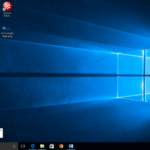
Bad news for those hoping to stick with the classic desktop version of Skype: Microsoft is pulling the plug. Again.
“As we continue to focus on and improve Skype version 8, support for Skype versions 7, and below will end on November 1, 2018 on desktop devices and November 15, 2018 on mobile and tablet devices,” a revision to Microsoft’s original post about the latest Skype version now reads. “Although you may be able to use older versions for a little while, we encourage you to update today to avoid any interruption.”
As you may recall, Microsoft suddenly and unexpectedly started upgrading the classic Skype desktop client—version 7.x—to a new, less capable product called Skype 8 in mid-July, right as I was heading to Sweden. Worse, they informed users that they had until September 1 to upgrade: After that, classic Skype would stop working.
The deprecation comes as the Windows operating system developer is consolidating its Skype development on a single client that’s used across Windows, macOS, Linux, iOS, Android, and even the Web. The new client, version 8, has been under development since 2016 and is where Microsoft is performing all new development work, including the recent call recording and end-to-end encryption features.
The software giant feels that it has made enough improvements to warrant the new deadline. It has added conversation search to Skype 8, for example, and will soon add the ability to tie phone numbers to Skype contacts. And Microsoft’s Ellen Kilbourne has shared an even longer list of improvements that the firm is working on, including performance improvements, advanced webcam settings, font size configuration, and more.
The deprecation comes as the American software company is consolidating its Skype development on a single client that’s used across Windows, macOS, Linux, iOS, Android, and even the Web. The new client, version 8, has been under development since 2016 and is where Microsoft is performing all new development work, including the recent call recording and end-to-end encryption features.
The introduction of these features means that the old client (a traditional Win32 application) is being left behind.the software giant doesn’t want to update that client—one of the big points of the new client is that it’s the same on all platforms, greatly reducing the amount of development work needed to add new features. And in the future, Microsoft might want to change the Skype network protocols in a way that prevents the old client from working entirely
Microsoft today revealed that the Skype classic app will stop receiving updates in November when its most popular features are integrated into Skype 8. The Skype v8 will continue to get better and new features like the ability to improved availability status are also coming.
Discover more from TechBooky
Subscribe to get the latest posts sent to your email.







